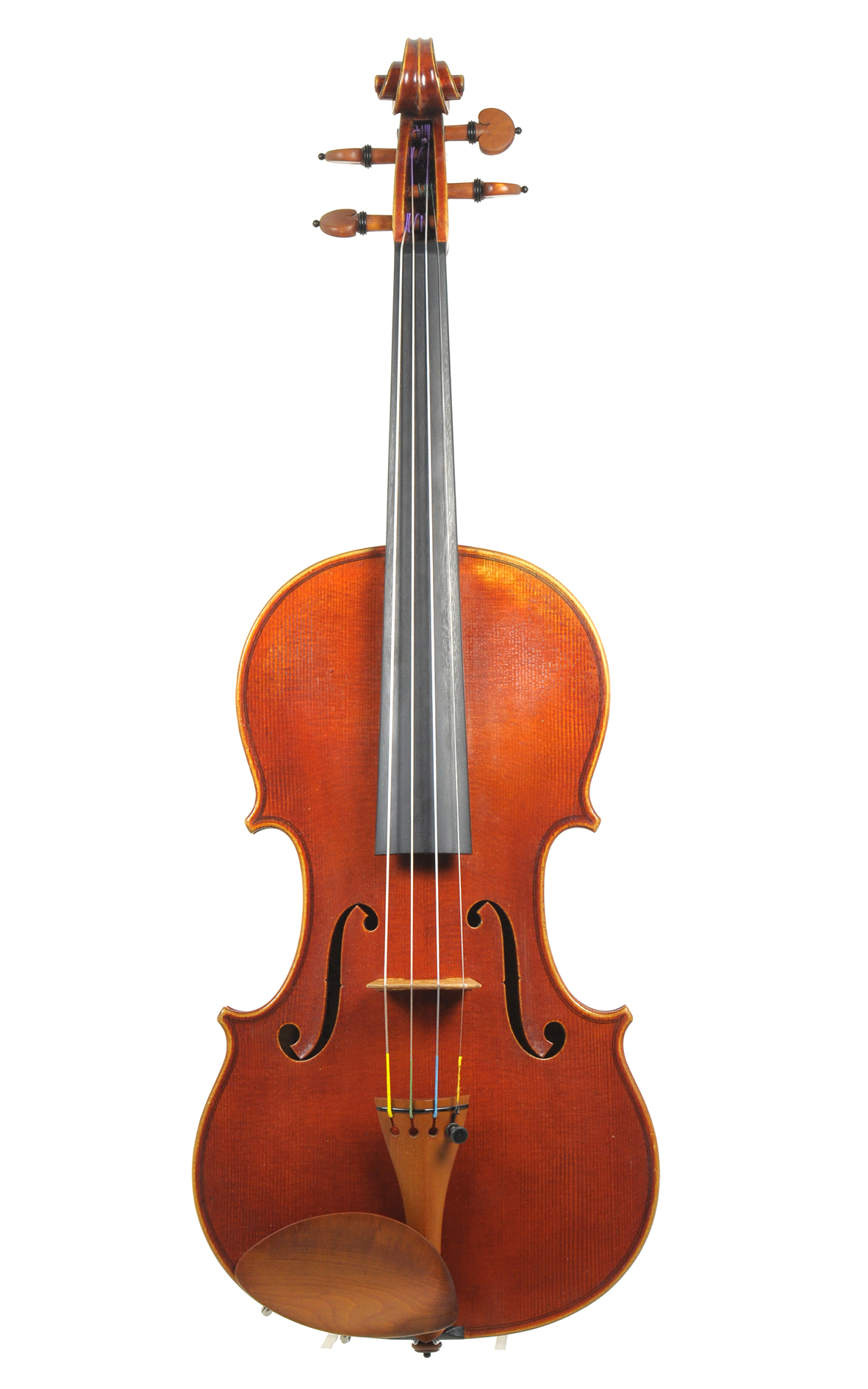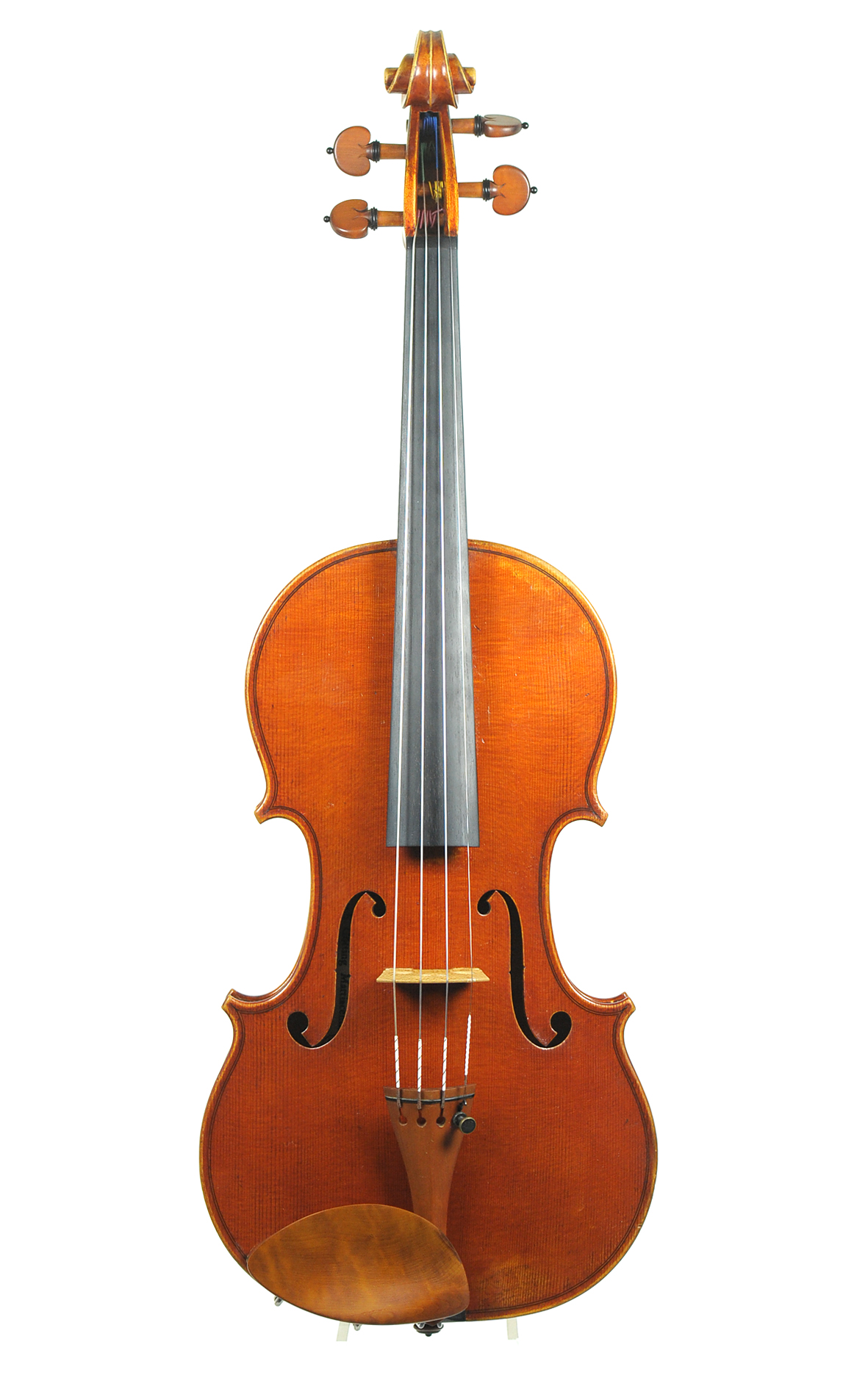Christoph Götting and the lessons of the old masters:
21 years of journeys through the world of famous violins. A portrait by Corilon violins
Ateliers with a rich tradition such as W. E. Hill & Sons, Rembert Wurlitzer and Vatelot-Rampal are and remain the top addresses in the world of premium stringed instruments. Ultimately they owe their influence in no small part to the excellent luthiers who studied and honed their skills during their time there. One such craftsman is the master violin maker Christoph Götting. He was hired at the highly esteemed atelier of J. & A. Beare in London at a remarkably early point in his career. Born in 1948 to a musical family from Wiesbaden, Germany, Christoph Götting learned the luthier's trade from 1964 to 1967 at the state vocational school for instrument making in Mittenwald. After his first year as a journeyman with Edith Dittrich in Bern, he came to Beare's in 1969. The young violin maker was fully aware of what a rare opportunity this was. In 1974 he spent a brief intermezzo in Mittenwald to take part in a master class which he completed with honours, and a few months later he returned to Beare's as one of the workshop’s most prominent artisans.
To this day Christoph Gotting regards the 21 years he spent working at this famous atelier as a privilege. Several valuable master instruments passed through his hands during this time, including multiple Stradivari; one of them was the 1713 "Gibson" Stradivari,which was also known as the "Huberman" and is now played by Joshua Bell. In 1936 it was stolen from its then owner, the Polish virtuoso Bronislav Huberman, who had left it backstage at Carnegie Hall in New York. 50 years later, while on his deathbed, the violinist Julian Altman - who had never attained any major fame of his own - confessed to his wife that he had spent his whole life playing the very "Gibson" which was believed to be missing. He had purchased it from the thief for $100 shortly after it was taken. Charles Beare received the commission to confirm the instrument’s authenticity. Once it was determined to be genuine, Christoph Götting was the luthier who restored it.
In his final year at Beares, Christoph Götting was involved in creating a section for new instruments , but in 1990 he decided instead to establish his own studio. He opened up shop in a converted 18th-century barn in Hampshire. At the age of 65, after having spent 44 years in England, he returned to his home town in 2013 – albeit not to retire, but to continue pursuing his craft in Wiesbaden-Dotzheim, where he is closer to his clients than he was in England. Since that time, Christoph Götting has crafted over 80 of his own violins and violas, and despite the fact that they strongly reflect historic role models, he does not consider them reproductions. Amongst other things, all of his instruments feature a very delicate coat of varnish which allows the wood to fully attain or develop its tonal properties. Varnish, a topic which has given rise to so many legends and myths, has become Christoph Götting's personal mission. Based on his studies of historic instruments, he has spent a great deal of time conducting his own experiments about how to create varnish; his goal is to unravel the mysteries of the old masters' methods and apply the proper lessons to his instruments. The musical luminaries who play Christoph Gotting's modern masterpieces include soloists, teachers and leading orchestra musicians such as Albert Rundelfrom the Cologne Chamber Orchestra, Claudio Abbado's colleague Markus Däunert,and Kolja Blacher, who led the Berlin Philharmonic with his Götting violin for around three years as well as using it to perform solo concerts.
In 2011 Christoph Gotting received the honour of the "Balvenie Master of Craft."
Our online catalogue features a fine masterpiece by Christoph Götting and other fine violins and contemporary violins, with audio sound samples.
Related articles:
Contemporary violin makers - the modern artisans
Mirecourt's new masters: violin makers in Mirecourt
Stradivari's heirs: violin makers in Cremona
Jan Špidlen - Art, innovation – and sport
Daniele Scolari and the second generation of the new art of violin-making in Cremona
Marcus Klimke: a highly decorated luthier
Stephan von Baehr and the architecture of the violin
Patrick Robin - a master of teaching and the craft
Samuel Zygmuntowicz: understanding Stradivarius






